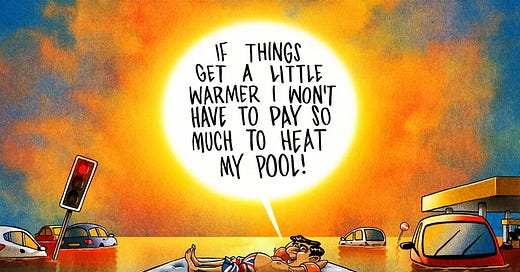Repost: Commitment issues
Almost twelve months to the day since I published this article, the price of UK emission allowances (UKA’s) has fallen by over 50% to a mere €35 per tonne. The malaise is even more striking when you consider that just across the English Channel, the EU carbon market continues to trade at around €80-85 per tonne.
In late June, the CCC published their annual report on the UK’s progress towards net zero calling for the UK government to develop a “clearer strategy to develop Net Zero industries.” In July the government published its consultation into the UK ETS, setting an emissions cap through to 2030, but at the least ambitious level available (see Subject to further consultation: The state of play in the UK carbon market).
Yesterday, the UK Prime Minister, Rishi Sunak went further and announced that many of his governments net zero policies would be delayed or watered down. A ban on the sale of new ICE cars was put back five years to 2035, while a plan to phase out the installation of gas boilers by 2035 was downgraded to only an 80% phase-out.
It’s important to be clear about the costs of meeting net zero and the significant challenges involved. As with everything though it involves trade-offs. If the UK does less to achieve the necessary emission reductions today, then it must by definition do more of the heavy lifting tomorrow.
To their credit the government have reaffirmed their commitment to meeting net zero by 2050. But what value does that commitment have? If the government renege on their interim 2030 targets then what are the chances that they do the same as 2050 looms on the horizon?
The problem is that without trust in that commitment it is very difficult for industries to invest, at least not without a hefty risk premium that will inevitably be passed onto consumers in the form of higher prices. Over the past twelve months the most vivid illustration of how trust in that commitment has diminished is the perilous drop in the UK carbon price.
“It takes many good deeds to build a good reputation, and only one bad one to lose it.” - Benjamin Franklin
When a government begins to lose economic credibility, the market will punish it by selling government bonds, forcing up interest rates and washing itself of it’s currency.
As I’ve outlined in previous posts, I believe that one way of framing carbon markets is through the lens of a currency - ‘The Currency of Decarbonisation’.
If a government introduces a carbon price and commits itself to this policy for the foreseeable future, then obligated emitters, investors and other market participants will react by incorporating the expected carbon price into their investment decisions.
However, the market will judge the governments commitment as somewhere between zero and absolute. The greater the perception is that a government might not stick to its self-imposed commitment, the larger the discount the market will factor in to the carbon price.
A loss of climate policy credibility means that businesses will either postpone investing until the policy uncertainty is resolved, or they will demand higher rates of return. Either way, the total level of emissions abatement achieved is likely to be reduced.
Knowing the ‘commitment issues’ signs to watch out for is going to be more important over the next few years. Commitment perceptions will influence the future direction of compliance carbon markets such as the EU emissions trading scheme (ETS), voluntary demand for carbon credits from the corporate sector, and individual nation demand for carbon credits with which to meet their commitments under the Paris Agreement.
How strong carbon markets show commitment
Assuming that the government or institution responsible for carbon markets acts in its self-interest, the more the observable gains from compliance with the ETS outweigh the observable gains from reneging, the more credible a policy is. Reputation and commitment devices are central to determining the credibility of a government, or an institution responsible for climate policy.
A long history of policy support is a strong reputational indicator of commitment. As I outline above, this creates a virtuous circle whereby emission abatement is achieved at lower cost. Even better if the policy has been gradually tightened over time. That kind of political support is difficult to achieve, and even harder to achieve over a long period of time.
A commitment device is often used by the government or institution responsible for implementing policy to demonstrate commitment. By deliberately restricting the option to deviate from the policy, other stakeholders become more confident that it will not be revoked.
There are three distinct types of commitment device used in carbon markets: legislation, delegation and securitisation.



